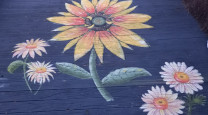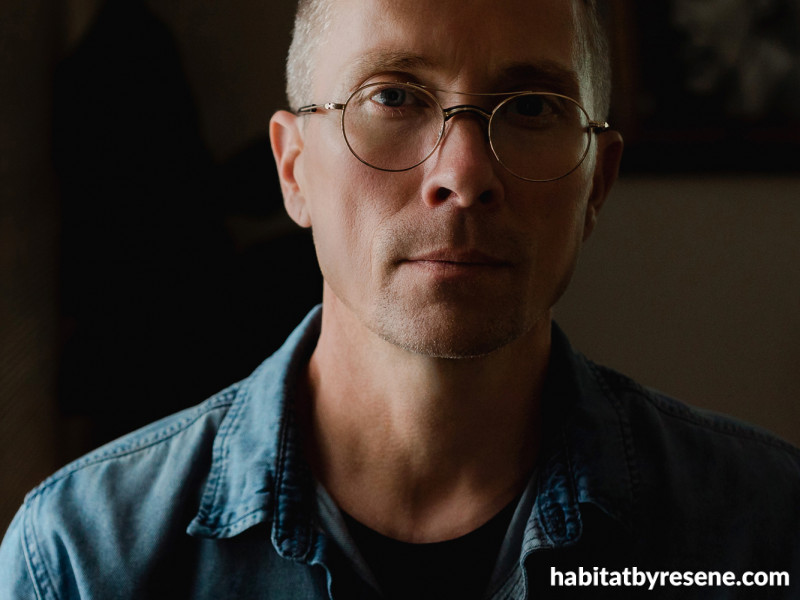
Capturing the soul of structures: Simon Devitt and the art of architectural photography
11 Jul 2023
If you’re interested in architecture and design, you might enjoy looking at these wonderfully captured images by photographer, Simon Devitt. With a strong passion and focus in the Photography of Architecture, Simon allows you to experience emotion and wonder through his images. We caught up with Simon to learn how he first got into photography, what it means to him, and also hear about his new book, Cape to Bluff. Here is what he had to say:
Tell us about your role and the different projects you run.
I am a photographer of architecture. My clients are architects and the various product and service companies that work closely with architects. I get charged with capturing the essence of how it feels to be there, not just how it looks. The architecture doesn’t travel but the pictures I make do.
I am also an educator and publisher. My work in education began with teaching at the School of Architecture at the University of Auckland for 10 years. More recently I produce and perform my own workshops here in New Zealand and internationally (Finland in August 2023). I also produce and perform an on-line mentorship (three times a year) for photographers and creatives that want to move their practice to a new level. It’s really philosophy or psychology disguised as photography.
I work with a variety of publishers around the world, and I’ve published my own books since 2011. My latest book Cape to Bluff has just sold out in 12 weeks. Andrea Stevens (writer) and I are currently working on two new titles.
I run a regular live interview on Instagram called Reading Room, which I have been doing since 2014, where I interview creatives and use the books they read as a way into a broader conversation.
I also have a photography prize at the University of Auckland that I’ve sponsored and judged since 2008.
What does a typical day look like for you?
I’m based in Wellington and I travel around NZ and abroad for many of the photo-shoots I do. I live close to the airport so it is very easy to get to most parts of NZ in a quick time. On a shoot I arrive early and leave late, exploring the project I’m charged with photographing, slowly and meticulously. My intention is to convey in my pictures how it felt to be there. When I’m not photographing spectacular architecture, I’m busy meeting with my clients to discuss their work, and I sometimes I can be found sitting in front of my computer doing admin.
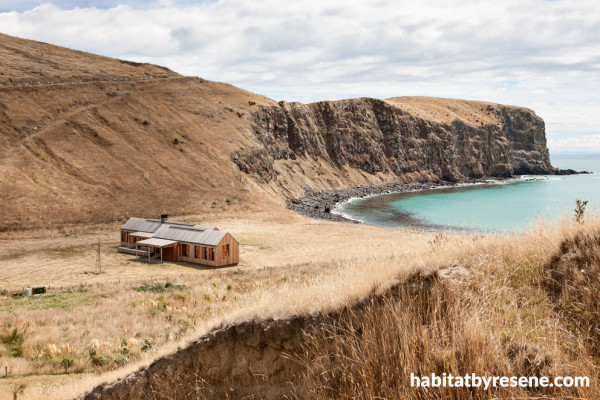
Scrubby Bay house, Banks Peninsula - Patterson and Associates. Image by Simon Devitt.
How did you get into photography and what has your career path been like to get you to this role?
It is fair to say that I grew up on the set of The Days of Our Lives. My home and my back yard were in a brand-new suburb called Conifer Grove in South Auckland, New Zealand. Built on flat, ex-racehorse land and crop farms on an inlet deep in the Manukau Harbour—it was cul-de-sac book ending cul-de-sac, each named after an old racehorse.
Perhaps the most inspiring memory with which I left high school was that of a teacher who opened my eyes to how I could view the world through a camera. This made a lasting impression and I gradually started imagining what it might be like to be a photographer. My work as a photographer is largely about sitting still and seizing moments: glimpses into and out of subtle gestures, brief encounters. My initial priority, when I am shooting, is how it feels to be somewhere, rather than how it looks: the cool evening spent in front of a warm fire; the smell of old paint peeling from big gestures of concrete forms; the expansion of a full room and the compression of an empty one.
Our sense of the world is related to where we have come from and the places where we have been. My life stories and experiences are an essential part of my photography equipment, as that, together with the environment in which I find myself, is precisely what informs the unique sense of place I feel when I turn up at a building to photograph it for the first time.
I had a curious beginning, printing forensic photography — while not for the faint-hearted, crime scene pictures revealed stories which unfolded from minute detail into a full account. I later experienced the thrilling challenge of capturing energy and decisive moments in a foray into professional sports photography. I have developed a unique approach from the combination of storytelling and dynamism of these early professional experiences and the processes which have evolved from them; all of which has informed my current practice as a photographer of architecture over the past two and a half decades.
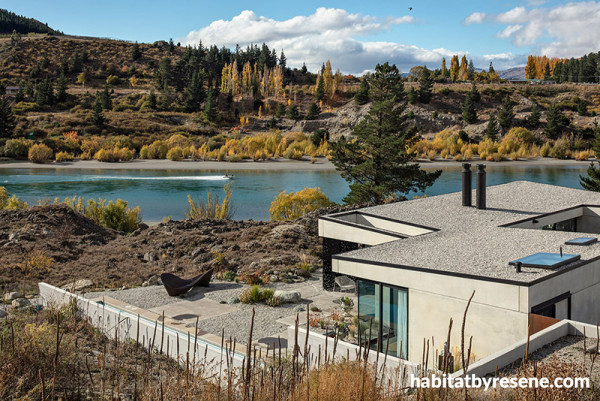
Black Quail house, Bannockburn - Bergendy Cooke. Image by Simon Devitt.
What is it about architecture and design that interests you?
A deep awareness that there are always new ways of seeing, this opens up an instinctive way of expanding the mind’s experiences. Identifying a demand for what you need, learning, absorbing, and applying it. For me, that powerful naive energy, the required constant growth, has always been imperative. Discovering knowledge from naivety and learning through necessity, add richness and textured complexity to the way I observe and create, with a continually fresh perspective.
Working all over the world has afforded me this ever-expanding sense of newness. Just as when I was photographing the skyline over the Bund in Shanghai one hot summer’s evening, and I needed to achieve a real sense of space and an original perspective. I knew I had to get higher up off the ground so I approached a restaurant to ask if I could go on their roof. To my surprise, they were as curious as I was and glad to help a stranger from New Zealand get the shot! It was like being on the set of Blade Runner: hot, humid, and very science-fiction-esque. A unique and special moment.
Photographing architecture may sound quite specific but the truth is it affords me the broadest possible view on the world, allowing me to treat landscapes, the built environment, and people with the same democratic eye.
Ever changing and lasting at the same time, the built environment leaves some of the more permanent imprints on our world. When people move, buildings remain, they stand and acquire the mark of time. Decay is the very last layer of beauty: as a building shows age, the signs of life with which it has been embedded start to emerge. By decoding these signs left by time, we uncover stories, insights into the vitality of human life. The mark of time, trees growing, materials fading, the traces left by inhabiting a space: That is the powerful stuff.
Time adds a layer of depth to photographs, buildings, and artifacts that cannot be faked, as the value it confers is unique in its unpredictability. Photographs are, by nature, made of time. Much in the same way as you start rather than make a garden, the photographer starts a picture and exposure to the natural alchemy of time gradually nurtures its growth, its context determining the way it is viewed and used. Photographing architecture, I find myself igniting that alchemical process as I stand at the point of convergence of time and meaning and capture the aliveness, identity and genesis of each building, history concentrated in one spot.
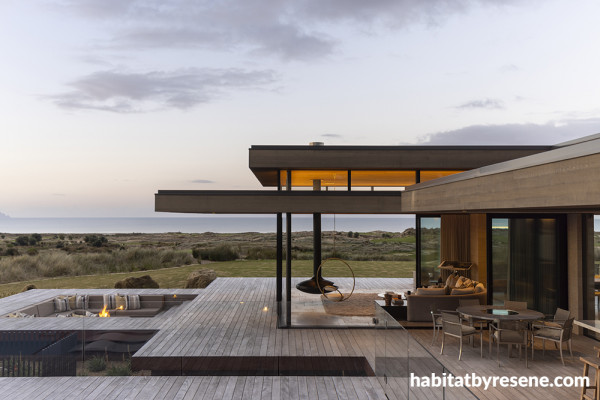
Dune house, Tara Iti - Julian Guthrie Architects. Image by Simon Devitt.
We hear you have released a new book, tell us a bit about it.
There has been a long lead in with Cape to Bluff. I started thinking about the idea for a long, slow walk through the New Zealand landscape during the period I was making one of my previous photo-books Rannoch (2016). I have worked with graphic designer Luke Scott on several other design projects including my photo-book series Ripe Fruit and All Things Considered. Writer Andrea Stevens and I have worked on several books together including Summer Houses (2012, Penguin) and Beyond the State (2014, Penguin). It is important to me that I collaborate with people that are not only amazing at what they do but are fun to work with too!
I love our country and our landscape. I've been lucky enough to travel throughout Aotearoa New Zealand over a long period of time and have really seen a lot of houses big and small, falling down and falling up, big budget, no budget. Consented and no code. It felt like the right time to show an aspirational view of how New Zealand architects respond to the varying nature of our landscape, from Cape to Bluff. And it’s a contemporary view curated to convey not just different places in New Zealand but also different ways of living.
Each house in this book is carefully chosen to allow the reader a view of our beautiful country, a view you may never get to see or experience. The strength of this is engrained in the relationship between architecture and photography; the buildings cannot travel but the photography and the stories they tell can. The landscape alone cannot provide the full picture. It is when people, the man made and the landscape that holds them combine that a wider truth is revealed. These brilliant architects create context for the aspiration we thrive on. High reward architecture in a brave new world.
Do you have a favourite project you've seen or photographed featuring Resene in the past?
Many of the New Zealand houses I photograph have used the beautiful colours and quality paints of Resene, so it's hard to choose just one! If I was pushed to choose a project, it’d be how Pete Bossley uses colour that stands out for me. Pete's interiors are sculptures of light where objects, artwork and people live. So, colour is vital to the atmospheres he creates. One project that lives long in my memory is the NZ Maritime Museum.
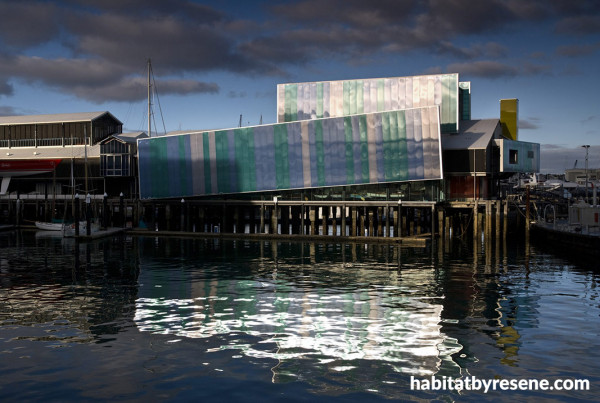
New Zealand Maritime Museum. Project by Pete Bossley, Bossley Architects. Image by Simon Devitt.
Do you have a favourite Resene colour?
Resene Smoky Green from the Karen Walker paints collection.
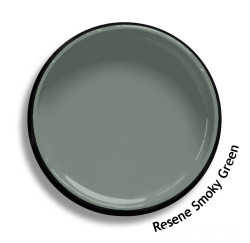
See more of Simon’s work: www.simondevitt.com
Published: 11 Jul 2023


